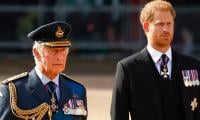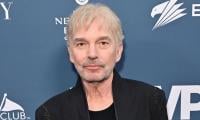A phenomenal rise
Mian Nawaz Sharif has been in politics for more than 40 years and still remains the most relevant and popular political leader in the country. Surely no other political leader in our history has survived this long (Zulfikar Ali Bhutto being the only exception but his judicial murder in a way explains his longevity).
A three-time prime minister, two-time chief minister, leader of the opposition and finance minister Punjab – this is quite a feat in a country where surviving one term is near impossible. What explains this?
Yes, Nawaz Sharif’s entry into politics took place during the rule of Ziaul Haq. With the military directly running the country for 33 years – with some gaps – between 1958 and 2008, it was hardly possible for any aspiring politician to enter politics without some kind of military support. But Mian Nawaz Sharif soon established himself as a true leader championing the democratic cause when he refused to toe the line by the establishment-backed president Ghulam Ishaq. In an historic speech, Nawaz Sharif famously declared that he would not take any dictation – knowing what this meant for his fate. The very next day, Ghulam Ishaq removed Nawaz Sharif as PM using the draconian 58-2/B. The removal was challenged in the Supreme Court which restored his premiership. Despite that, he was still forced out of power.
Even during his first tenure which lasted less than three years, Nawaz Sharif made his mark through his economic reforms agenda in all sectors of the economy. From banking to foreign exchange to tax to privatisation, Pakistan was opened up for investment opportunities from around the globe. His economic formula was simple – cut the bureaucratic red tape and allow the private sector to play a more dominant role. Achieving GDP growth of over seven percent in only the second year of his term was nothing less than a miracle.
Each time his detractors thought Nawaz Sharif was finished, he made a comeback – each time more spectacularly. In 1997, he won a two-thirds majority in the National Assembly, surprising everyone. Economic reforms continued in his second tenure. Realising the importance of regional trade, he initiated peace efforts to improve relations with all the neighbours including India. This initiative resulted in the breakthrough visit by the then Indian PM Atal Bihari Vajpayee in what became known as the ‘Bus Yatra’. For the first time since Independence, an Indian PM visited Minar-e-Pakistan as a symbol of the acceptance of Partition. Coming from a BJP PM, this was significant from Pakistan’s foreign policy perspective. The Lahore Accord could have paved the way for a possible solution of the Kashmir issue but all efforts fizzled out after Nawaz Sharif was yet again removed through a direct military intervention.
Nawaz Sharif’s second tenure is also famous for the decision to showcase Pakistan’s nuclear capability after India went ahead with its nuclear detonation in May 1998. The decision to go ahead with nuclear detonation against strong resistance from the major world powers was courageous.
The stakes against Mian Nawaz Sharif were even more difficult post-1999. He was not only removed from office but jailed and then exiled for seven years. General Musharraf tried his best that Nawaz Sharif remained out of the political process of Pakistan forever. But he not only survived but returned with a stunning victory in 2013 – becoming PM for an unprecedented third term.
After the 2013 elections, one thing was clear: Nawaz Sharif had to be removed permanently through a well-planned conspiracy. The dharna of August 2014 was the beginning of the ‘Get Nawaz out’ project. But, despite massive support from non-democratic forces, it failed to dislodge him. Not content with that failure, the Panama leaks issue was raised – even though his name was not even in the list. Through a dubious decision, he was disqualified for life – not on corruption charges, or any commission or kickback, or misuse of office or money laundering, but for non-declaration of salary from his son’s company.
Despite the dharna and conspiracies to oust him, Mian Nawaz Sharif’s third term is well-regarded in terms of economic prosperity. The period between 2013 and 2018 is known for high growth, low inflation, low unemployment, low poverty levels, low fiscal deficit, stable currency, spectacular capital market growth etc. CPEC was launched during this period and several multi-billion dollar projects were not only initiated but completed. Additionally, Pakistan’s internal security environment significantly improved. Most importantly, Pakistan’s energy crisis was completely resolved during this period.
During his more than 40 years in politics, Mian Nawaz Sharif has seen it all – from the highs of attaining power three times to the lows of being falsely convicted, exiled and jailed. Through it all, he has remained steadfast in his resolve to serve the country and live up to the expectations and aspirations of the millions that support him.
As I walked out last week after meeting him in London, I wondered what it is that has kept his spirits so high. Surely his love for Pakistan has helped him survive against all odds. I found Nawaz Sharif more determined than ever to come back and serve the country he loves – bad news for his detractors. Make no mistake: Mian Nawaz Sharif is going nowhere.
The writer is the spokesperson for Nawaz Sharif and Maryam Nawaz, and former governor Sindh. He tweets @Real_MZubair
-
 Why Ashton Kutcher Is Still Talking About Whether He Showers
Why Ashton Kutcher Is Still Talking About Whether He Showers -
 IMF’s World Economic Outlook: ‘Resilient’ 2026 Growth Expected Amid Tariffs & AI Boom
IMF’s World Economic Outlook: ‘Resilient’ 2026 Growth Expected Amid Tariffs & AI Boom -
 Find Out Early Subtle Signs That You Might Have Parkinson's Disease
Find Out Early Subtle Signs That You Might Have Parkinson's Disease -
 Prince Harry Appears In High Spirit, Greets Supporters At London High Court
Prince Harry Appears In High Spirit, Greets Supporters At London High Court -
 Kate Middleton, Prince William Left 'frustrated' For THIS Major Reason
Kate Middleton, Prince William Left 'frustrated' For THIS Major Reason -
 Robert Irwin Reveals Relationship Status After 'DWTS' Romance Rumors
Robert Irwin Reveals Relationship Status After 'DWTS' Romance Rumors -
 Relieve Eczema Symptoms This Winter With Simple Steps
Relieve Eczema Symptoms This Winter With Simple Steps -
 Prince Harry Faces Marital Tensions As King Charles Offers Olive Branch
Prince Harry Faces Marital Tensions As King Charles Offers Olive Branch -
 South Korea, Italy Strengthen Ties To Bolster AI Technology, Business, Defence Cooperation
South Korea, Italy Strengthen Ties To Bolster AI Technology, Business, Defence Cooperation -
 Elon Musk Shares Crucial Advice As China’s Birth Rate Hits Record Low Since 1949
Elon Musk Shares Crucial Advice As China’s Birth Rate Hits Record Low Since 1949 -
 Kelly Clarkson Finally Quitting Morning Show?
Kelly Clarkson Finally Quitting Morning Show? -
 'Confident' Prince Harry Breaks Silence After Returning To Britain
'Confident' Prince Harry Breaks Silence After Returning To Britain -
 James Gunn Reveals What Caused Wonder Woman Casting Rumors
James Gunn Reveals What Caused Wonder Woman Casting Rumors -
 Tesla Emerges Early Winner As Canada Welcomes Chinese EVs: Here’s Why
Tesla Emerges Early Winner As Canada Welcomes Chinese EVs: Here’s Why -
 New Hope For People With Obesity As Failed Drug Offers Cure
New Hope For People With Obesity As Failed Drug Offers Cure -
 Prince Harry Considering ‘half-in, Half-out’ Royal Role Amid UK Trip?
Prince Harry Considering ‘half-in, Half-out’ Royal Role Amid UK Trip?



